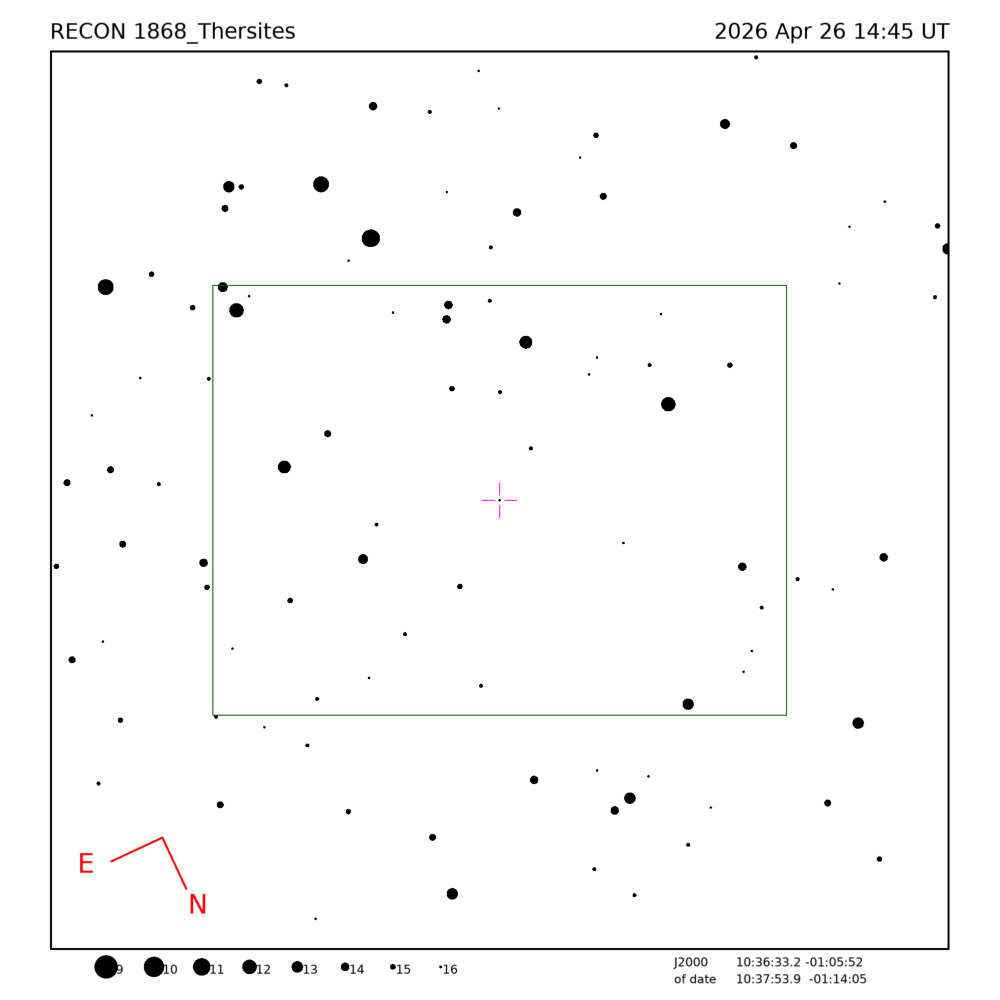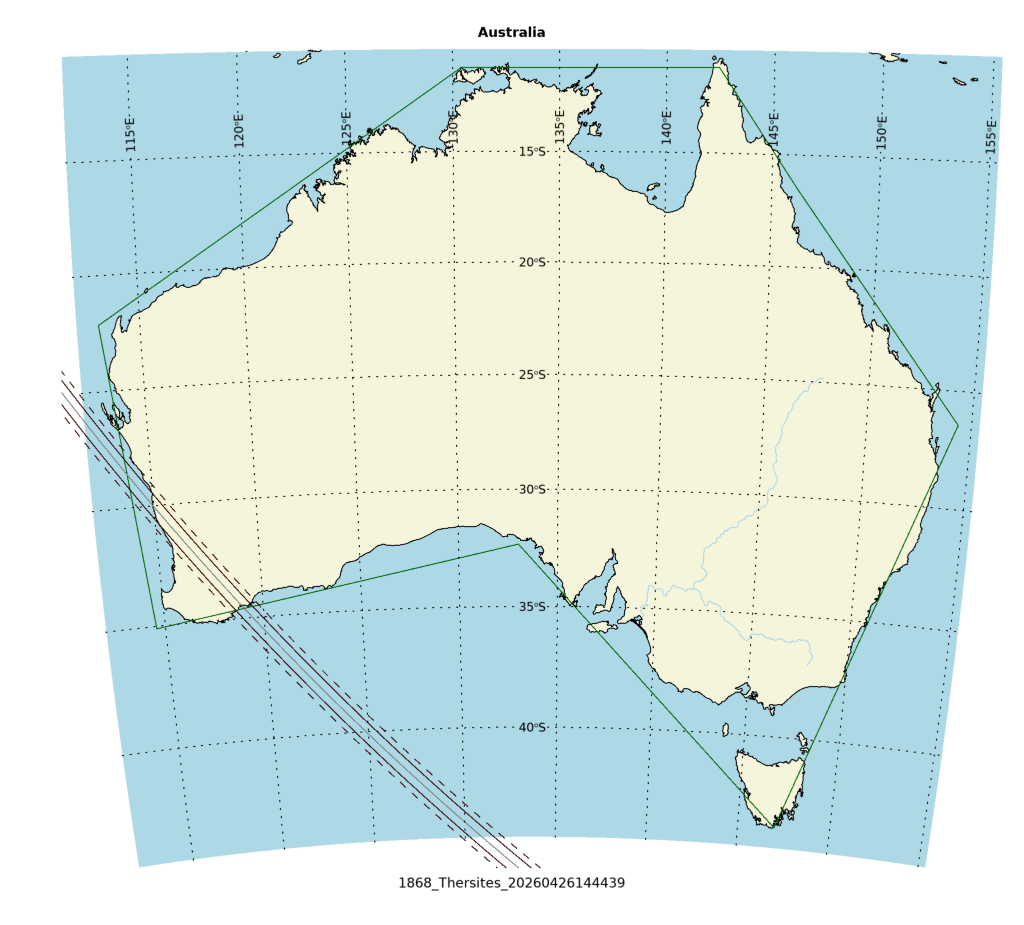
Occultation event with (1868) Thersites, event index number 3687
Regions able to see the event: Australia
Geocentric closest approach at 2026/04/26 14:44:39 UTC
J2000 position of star is 10:36:33.2 -01:05:52
Equinox of date position of star is 10:37:53.9 -01:14:05
Star is 10 degrees from the moon. Moon is 76% illuminated.
Stellar brightness G=16.7, apparent brightess of occulting body is G=15.3
Use an exposure time of 1.90 seconds with the standard RECON-QHY system.
SNR of 3.4 per integration for unocculted signal
Expected flux drop is 21% with SNR of 0.7 for the occulted depth (per occulted point)
Apparent velocity is 8.9 km/sec on the sky relative to the star, or, 8.5 arcsec/hr.
Position angle of asteroid motion is 159.1 degrees
The recommended exposure time corresponds to 16.9 km per image.
The 1-sigma error in the time of the event is 4.2 seconds.
The 1-sigma cross-track error in the shadow position is 8.3 km.
The sky-plane scale is 3781.5 km/arcsec.
Diameter estimates:
76.9 km assuming a 5% albedo, maximum of 8.6 sec for a central chord
31.4 km assuming a 30% albedo, maximum of 3.5 sec for a central chord
Cross-track diameter of 68.2 km used for deployment plan.
Star training set for 1868_Thersites, (2026/04/26 14:45UT) Object RA Dec mag sep mel Regulus 10:09:46.3 +11:50:15 1.3 14.82 8 33 Sex 10:42:44.5 -01:52:50 6.3 1.37 11 PPM 178242 10:39:31.6 -02:06:46 8.5 0.97 11 PPM 178237 10:38:56.6 -00:44:08 9.5 0.56 9 PPM 178240 10:39:19.7 -00:57:40 10.1 0.45 10 1868_Thersites 10:37:53.9 -01:14:05 15.3 10 Positions are for equinox of date


Star training set for 1868_Thersites, (2026/04/26 14:45UT) Object RA Dec mag sep mel Regulus 10:08:21.9 +11:58:02 1.3 14.82 8 33 Sex 10:41:24.0 -01:44:33 6.3 1.37 11 PPM 178242 10:38:11.1 -01:58:31 8.5 0.97 11 PPM 178237 10:37:35.8 -00:35:54 9.5 0.56 9 PPM 178240 10:37:58.9 -00:49:26 10.1 0.45 10 1868_Thersites 10:36:33.2 -01:05:52 15.3 10 Positions are for J2000